You are using an out of date browser. It may not display this or other websites correctly.
You should upgrade or use an alternative browser.
You should upgrade or use an alternative browser.
Reviews by leeperry
Filters
Show only:
Loading…
leeperry
Galvanically isolated his brain
Pros: 2.65 W / channel output
Cherry-picked potentiometers to avoid channel imbalance at low volume
Anti-pop protection when turning on/off
6.35mm + 4.4mm jacks
DC offset protection
Small form factor
Assembled in USA
Aluminium enclosure
Custom engravable
1.0/4.7x gain front-mounted switch
RCA & 3.5mm inputs with a front-mounted switch
Preamp output
Linear PSU
Cherry-picked potentiometers to avoid channel imbalance at low volume
Anti-pop protection when turning on/off
6.35mm + 4.4mm jacks
DC offset protection
Small form factor
Assembled in USA
Aluminium enclosure
Custom engravable
1.0/4.7x gain front-mounted switch
RCA & 3.5mm inputs with a front-mounted switch
Preamp output
Linear PSU
Cons: Opamps can't be rolled
4 W / channel would have been nice for Hifiman HE-6
No balanced headphone output
4 W / channel would have been nice for Hifiman HE-6
No balanced headphone output
Hiya, so I believe JDS LABS built on their knowledge of O2 to make ATOM(same form factor, same 16VAC external PSU, better measurements) then improved it further with ATOM+ and they are now offering ATOM2 that certainly appears to nail it nicely :
Previously I had the opportunity to try ATOM+ with my Hifiman HE6SEV2 and HE500, it sounded very clear and very uncolored but 1W / channel couldn't quite drive them as Hifiman advises a bare minimum of 2W for HE6SE. But lo and behold ATOM2 is back with 2.65WPC, nicely orchestrated by an army of OPA1656's:
HE6SE is now driven pretty nicely and as the old saying goes "if it sounds bad and measures well it means you're not measuring the right thing", I must say that I really wanted to believe the THX headamp hype but SMSL SP200 was for me a huge disappointment both with HE6SE & HE500 so I then tried MONOLITH 887 but it sounded identical to my ears, like listening from the next room with very poor resolution.
Truth is the whole THX headamp technology appears to be a based on an opamp that was never meant for audio applications :
Surely there are many different kinds of measurable distortions but to my ears on my rig, especially with HE6SE, those THX headamps are vastly outrun by ATOM 2 and its army of audio-grade OPA1656:
ATOM 2 really provides great performance to my ears, stereo balance is fine even at low volume, plenty of output power, dual 3.5mm/RCA inputs, trouble-free pop protection, DC protection so your headphone won't fry no matter what, metal enclosure so it stays in place when rolling cables and shields against cellphone interferences, black-painted so it'll become stealth while watching movies in a dark room, linear PSU so it won't throw back a lot of SMPS noise to the rest of the rig and they'll even engrave whatever picture/text you want on the top panel for no additional fee huh: https://blog.jdslabs.com/2024/03/more-custom-engravings-2024/
I've tried it with several DAC's, they all came with a character of their own(R2R / ES9039 / AK4493S) and every time HE6SE came with nicely textured deep bass, big wide SS and no lack of drive power whatsoever

No balanced output and I know some people claim that HE6SE sounds better with 4 W / channel, but this a small form-factor headamp that costs $129 and for the price there isn't much competition with so many features. Also, most headphones users run dynamic headphones that aren't nearly that demanding and will sound perfectly fine as-is.
Surely I wish they would build a bigger/better/badder version for say $199 but to get a balanced headamp with 4W / channel there usually is a fourfold price increase, mostly because only a niche market would need it so all in all, bang/bucks is very impressive on this nice little headamp that doesn't break the bank and allows to fund better DAC/headphones

Previously I had the opportunity to try ATOM+ with my Hifiman HE6SEV2 and HE500, it sounded very clear and very uncolored but 1W / channel couldn't quite drive them as Hifiman advises a bare minimum of 2W for HE6SE. But lo and behold ATOM2 is back with 2.65WPC, nicely orchestrated by an army of OPA1656's:
HE6SE is now driven pretty nicely and as the old saying goes "if it sounds bad and measures well it means you're not measuring the right thing", I must say that I really wanted to believe the THX headamp hype but SMSL SP200 was for me a huge disappointment both with HE6SE & HE500 so I then tried MONOLITH 887 but it sounded identical to my ears, like listening from the next room with very poor resolution.
Truth is the whole THX headamp technology appears to be a based on an opamp that was never meant for audio applications :
OPA564 is general purpose power amp(valve actuator, motor drive) so distortions look on the high side at 0.2% which can be very audible with such sensitive headphones
Surely there are many different kinds of measurable distortions but to my ears on my rig, especially with HE6SE, those THX headamps are vastly outrun by ATOM 2 and its army of audio-grade OPA1656:
OPA1656 (OPA165x) are BurrBrown™ op amps designed specifically for audio
ATOM 2 really provides great performance to my ears, stereo balance is fine even at low volume, plenty of output power, dual 3.5mm/RCA inputs, trouble-free pop protection, DC protection so your headphone won't fry no matter what, metal enclosure so it stays in place when rolling cables and shields against cellphone interferences, black-painted so it'll become stealth while watching movies in a dark room, linear PSU so it won't throw back a lot of SMPS noise to the rest of the rig and they'll even engrave whatever picture/text you want on the top panel for no additional fee huh: https://blog.jdslabs.com/2024/03/more-custom-engravings-2024/
I've tried it with several DAC's, they all came with a character of their own(R2R / ES9039 / AK4493S) and every time HE6SE came with nicely textured deep bass, big wide SS and no lack of drive power whatsoever
No balanced output and I know some people claim that HE6SE sounds better with 4 W / channel, but this a small form-factor headamp that costs $129 and for the price there isn't much competition with so many features. Also, most headphones users run dynamic headphones that aren't nearly that demanding and will sound perfectly fine as-is.
Surely I wish they would build a bigger/better/badder version for say $199 but to get a balanced headamp with 4W / channel there usually is a fourfold price increase, mostly because only a niche market would need it so all in all, bang/bucks is very impressive on this nice little headamp that doesn't break the bank and allows to fund better DAC/headphones
Last edited:
leeperry
Galvanically isolated his brain
Pros: best voltage regulator + high precision clock + low-latency USB chipset = optimal USB audio
Cons: not cheap
** UPDATE 03/2023: borrowed OPTIMO NANO & OPTIMO 3 DUO briefly:
So this is OPTIMO NANO :

Runs 4x LT3045, which happens to be the market-leading voltage regulator with lowest output noise, that go through 2x big caps that are most likely here to further help drop ripple and provide big buffers of voltage ready to fuel anything connected up to 2A.
Fact is that the bigger the caps, the lower their load & noise and the stronger the buffering, not to mention that as much as XE USB already runs the same LT3045 chip there is no way such tall caps could be used on an internal PC card and dual-stage noise filtering never goes unnoticed results-wise anyhow.
Its output stage is based on JCAT's long experience in price-no-object OPTIMO 3 DUO LPS, so this is basically a baby JCAT LPS that sneakily hides inside your desktop PC case.
Good sides are that signal path is short and DC cables are silver-plated in order to circumvent skin effect and improve high-frequencies transit.
And this is OPTIMO 3 DUO, their TOTL LPS:

It's big, it's bad, it's mean, 6 Kg, 60x40x40 cm and even though it's all dressed in black it isn't quite as stealth as OPTIMO NANO.
Product page comes with internal pic :

So that's a big heavy 100VA transformer feeding 2x 3A DC outputs(ranging from 5V to 15V on order) with independent galvanically isolated outputs.
Comes with rhodium-plated Furutech IEC inlet and speakON Neutrik connectors that are widely used in the pro-audio world because they are knowingly sturdy and a very far cry from the cheap "aviation" 2 pins connectors many LPS use in order to save costs.
Still the same love for NICHICON "Fine Gold" MUSE capacitors as in OPTIMO NANO, except that they are now much bigger and also 6x per output instead of 2x on OPTIMO NANO.
Also, DC cables are dual-shielded OCC because you're only as strong as your weakest link.
So basically OPTIMO 3 DUO is their no-compromise LPS that doesn't cut any corner.
Comparing them on XE USB:
OPTIMO NANO makes a major improvement over my good ATX PSU(single figure VRMS ripple "EVGA SuperNOVA 550 G3") and also the few 100-200 bucks "low-noise" PSU's I've lengthily compared(ifi-audio iPowerX 5V, etc). It does remove the nasty metallic color to the sound("digitis") and also drastically improves soundstage and resolution.
I certainly enjoy the fact that it sits nicely inside the PC case, WAF is at stakes

But OPTIMO 3 DUO is another galaxy basically, bona fide no-cost-object 5V end-game LPS is the name of the game

That coloration you always thought to be due to your headphone or headamp, well, be ready to have second thoughts to say the least as soundstage brutally becomes far more 3D, no more harshness or agressive upper-mids, resolution goes beyond what you would have ever expected and every object in the soundstage gets to live a 3D life of its own. Shocking, oh yes.
Tiny hardly-audible details on string instruments you never noticed become readily apparent and vocals simply sound stunningly real.
I do use a fully rehoused HE500 headphone with solid silver internal wiring that's willing to take you to the moon if fuelled properly, with pitless sub-bass & world-class creamtastic mids, I get sound behind my ears, right before me, cra-zy

As this review says:
That's basically it, I guess JCAT got it all nailed down and it's easy to hear that all that gear was engineered to sing along together.
To sum it up, OPTIMO NANO is the entry ticket for JCAT LPS design that's been specifically designed to fuel XE USB providing perfect synergy, it also won't come with any extra desktop clutter.
But if you're in the market for the best possible no-cost-object audio rendering, then OPTIMO 3 DUO is clearly much higher up the food chain, to the point that once you'll get used to it, nothing else with allow you to forget that super HD resolution you would have never expected your rig to provide

--
Hi guys,
Was already thoroughly impressed by JCAT femto USB board but recently had the opportunity to try their newer XE USB board and I figured a review would be in good order so here goes


Using ASM3142 USB chipset that supports 10Gbit/s USB 3.1 Gen 2 and promises "high bandwidth performance with low latency". One would certainly expect such high speed to come with both low jitter and low latency

Voltage regulator taking care of both powering the entire board itself and the external USB devices is the market-leading LT3045 that provides as low as 0.8 uV noise, lower than anything else on the market(including discrete solutions). Game-ending territory in 3 words.
So we both have clean power and low latency USB but icing on the cake is an emerald OCXO (oven controlled oscillator) from SiTime.

The inside of a PC case is a very harsh environment due to EMI/RFI bouncing all over the place and this link calls this clock no less than "game changing".
It's basically a very high precision clock in a tiny faraday cage that will provide 0.005 ppm (part per million) stability and age as low as ±0.25 ppb daily (=92 ppb/year when your average quartz crystal clock ages around 5 ppm the first year and then 3/year thereafter as discussed in this link).
I guess the big heatsink is here to cool down LT3045.

This time things get simpler, two jumpers to choose whether you want to power each USB port individually and providing external power is mandatory as board doesn't use PCIe noisy mobo power at all, proof is that board won't be recognized if no external power is provided.
I haven't tested the internal Molex connector because even the best ATX PSU comes with single figure VRMS noise so I decided to fuel the board from the outside power jack alone with my good ole 1uV-rated 5V ifi-audio iPower.
Windows driver installing was a breeze eventually and I tried it both on DENAFRIPS ARES II DAC and Soekris DAC1101.
Sonic improvement over femto JCAT USB is quite striking, it's like mobo USB would be flying coach, femto JCAT would be business class with champagne and all but XE USB would then be flying on the Concorde lol(NYC/London in less than 3H yay). There is no going back, not in a million years. The nasty part of audiophile hobby is that you never know what you've been missing till you get to hear it and the last % never come cheap.
Going from femto USB board to XE USB board provides so much more resolution that it left me jaded, one can easily blame the rest of his rig when the weak link is actually way upstream in the USB connection huh, t's'all a bunch of 0's and 1's yeah right, as if

I guess it's even more true with DAC's running a FPGA such as the two R2R's I have here because these don't run an on-board clock of their own and basically the tighter the input signal the tighter the processing and the cleaner the sound

I realize that async USB is supposed to fix this sort of issues but very high precision clocking + very clean power can only improve sound rendering, hasta la vista

For the record, exact part# of the clock was disclosed on audiophilestyle.com forum and on its own it already costs $110.
Add up the price of R&D, prototypes, manufacturing, markup to make up for RMA costs, VAT and what-not, then final price starts to make a lot of sense.
BTW, I was also able to try their USB enhancer dongle:
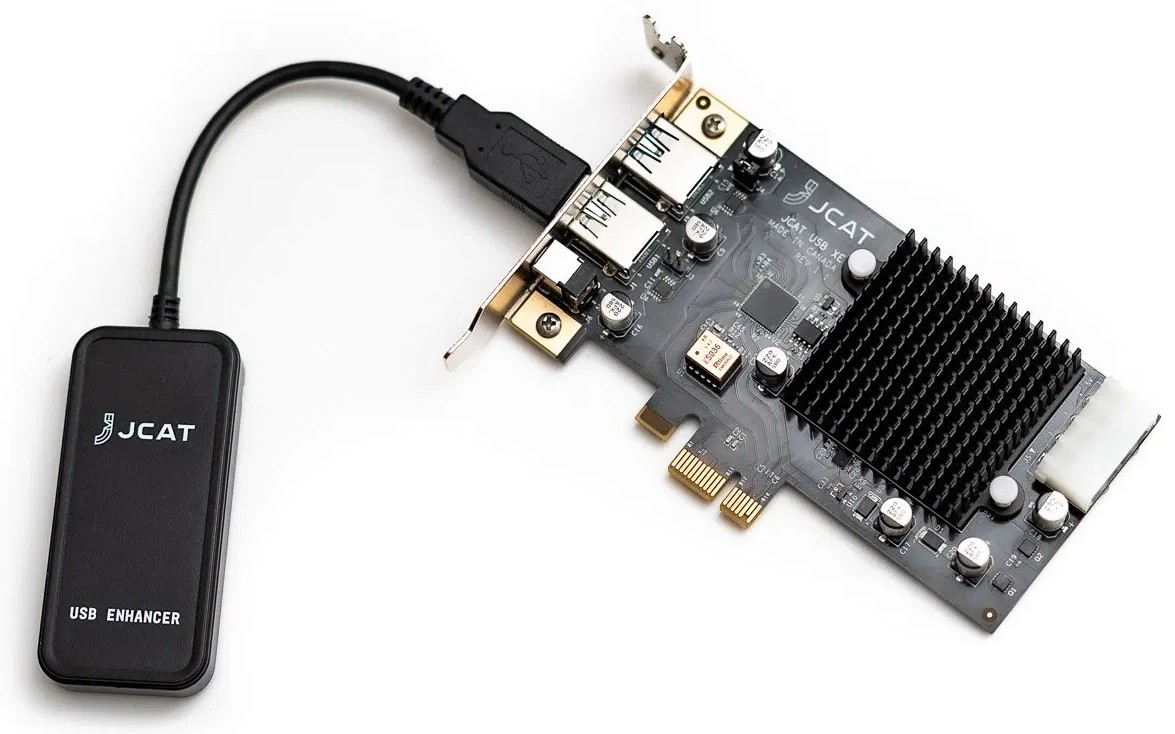
It happens to be OEM from a Japanese company called SPEC.
And this local review echoes exactly what I'm hearing.
Short story is that once you plug this dongle into the unused secondary port of XE USB board, you'll never want to take it off as to my ears with HE-500 snare drums sound a lot more natural and globally sound becomes a whole lot more enjoyable. Removing it is not an option once you've heard what it does really, it doesn't color the sound one bit(unlike that nasty-sounding AQ Jitterbug) but it removes digitis glare basically, because even with the best clock and best power it's still a PC at heart and this magical dongle gives it a natural tone that's quite amazing to listen to.
I'm starting to comprehend why some people pay fortunes for caps such as BlackGate's because ruby mica caps certainly appear to do the magic

All in all, JCAT did it again, those who still believe in 2021 that S/PDIF will always be superior to USB(link against this theory) might wanna hear what JCAT has to offer, network Dante is not a prerequisite anymore and same goes for femto reclockers, TCXO transports, out-of-specs I²S over cables, yada yada.
This OCXO-driven USB transport with a very short USB cable & low-noise external PSU is most definitely the real deal to my ears and renders pretty much all weaker offerings plain obsolete, farewell to all those now useless paperweight-worthy black boxes I'd say.
I already wonder what next step is lol, prolly running an atomic clock of my own but that doesn't sound too convenient

PS: exactly my point, as I found out after writing this review: https://audiophilestyle.com/polestar/computers-networking/jcat-usb-card-xe-reviews-r293/
PPS: IME femto version requires a reboot when unplugging external 5V PSU but not the XE so that's way more convenient when switching things around in order to properly A/B, great improvement.
So this is OPTIMO NANO :

Runs 4x LT3045, which happens to be the market-leading voltage regulator with lowest output noise, that go through 2x big caps that are most likely here to further help drop ripple and provide big buffers of voltage ready to fuel anything connected up to 2A.
Fact is that the bigger the caps, the lower their load & noise and the stronger the buffering, not to mention that as much as XE USB already runs the same LT3045 chip there is no way such tall caps could be used on an internal PC card and dual-stage noise filtering never goes unnoticed results-wise anyhow.
Its output stage is based on JCAT's long experience in price-no-object OPTIMO 3 DUO LPS, so this is basically a baby JCAT LPS that sneakily hides inside your desktop PC case.
Good sides are that signal path is short and DC cables are silver-plated in order to circumvent skin effect and improve high-frequencies transit.
And this is OPTIMO 3 DUO, their TOTL LPS:

It's big, it's bad, it's mean, 6 Kg, 60x40x40 cm and even though it's all dressed in black it isn't quite as stealth as OPTIMO NANO.
Product page comes with internal pic :

So that's a big heavy 100VA transformer feeding 2x 3A DC outputs(ranging from 5V to 15V on order) with independent galvanically isolated outputs.
Comes with rhodium-plated Furutech IEC inlet and speakON Neutrik connectors that are widely used in the pro-audio world because they are knowingly sturdy and a very far cry from the cheap "aviation" 2 pins connectors many LPS use in order to save costs.
Still the same love for NICHICON "Fine Gold" MUSE capacitors as in OPTIMO NANO, except that they are now much bigger and also 6x per output instead of 2x on OPTIMO NANO.
Also, DC cables are dual-shielded OCC because you're only as strong as your weakest link.
So basically OPTIMO 3 DUO is their no-compromise LPS that doesn't cut any corner.
Comparing them on XE USB:
OPTIMO NANO makes a major improvement over my good ATX PSU(single figure VRMS ripple "EVGA SuperNOVA 550 G3") and also the few 100-200 bucks "low-noise" PSU's I've lengthily compared(ifi-audio iPowerX 5V, etc). It does remove the nasty metallic color to the sound("digitis") and also drastically improves soundstage and resolution.
I certainly enjoy the fact that it sits nicely inside the PC case, WAF is at stakes

But OPTIMO 3 DUO is another galaxy basically, bona fide no-cost-object 5V end-game LPS is the name of the game

That coloration you always thought to be due to your headphone or headamp, well, be ready to have second thoughts to say the least as soundstage brutally becomes far more 3D, no more harshness or agressive upper-mids, resolution goes beyond what you would have ever expected and every object in the soundstage gets to live a 3D life of its own. Shocking, oh yes.
Tiny hardly-audible details on string instruments you never noticed become readily apparent and vocals simply sound stunningly real.
I do use a fully rehoused HE500 headphone with solid silver internal wiring that's willing to take you to the moon if fuelled properly, with pitless sub-bass & world-class creamtastic mids, I get sound behind my ears, right before me, cra-zy

As this review says:
Optimo 3 Duo is like a high resolution boost for your system
That's basically it, I guess JCAT got it all nailed down and it's easy to hear that all that gear was engineered to sing along together.
To sum it up, OPTIMO NANO is the entry ticket for JCAT LPS design that's been specifically designed to fuel XE USB providing perfect synergy, it also won't come with any extra desktop clutter.
But if you're in the market for the best possible no-cost-object audio rendering, then OPTIMO 3 DUO is clearly much higher up the food chain, to the point that once you'll get used to it, nothing else with allow you to forget that super HD resolution you would have never expected your rig to provide

--
Hi guys,
Was already thoroughly impressed by JCAT femto USB board but recently had the opportunity to try their newer XE USB board and I figured a review would be in good order so here goes


Using ASM3142 USB chipset that supports 10Gbit/s USB 3.1 Gen 2 and promises "high bandwidth performance with low latency". One would certainly expect such high speed to come with both low jitter and low latency
Voltage regulator taking care of both powering the entire board itself and the external USB devices is the market-leading LT3045 that provides as low as 0.8 uV noise, lower than anything else on the market(including discrete solutions). Game-ending territory in 3 words.
So we both have clean power and low latency USB but icing on the cake is an emerald OCXO (oven controlled oscillator) from SiTime.

The inside of a PC case is a very harsh environment due to EMI/RFI bouncing all over the place and this link calls this clock no less than "game changing".
It's basically a very high precision clock in a tiny faraday cage that will provide 0.005 ppm (part per million) stability and age as low as ±0.25 ppb daily (=92 ppb/year when your average quartz crystal clock ages around 5 ppm the first year and then 3/year thereafter as discussed in this link).
I guess the big heatsink is here to cool down LT3045.

This time things get simpler, two jumpers to choose whether you want to power each USB port individually and providing external power is mandatory as board doesn't use PCIe noisy mobo power at all, proof is that board won't be recognized if no external power is provided.
I haven't tested the internal Molex connector because even the best ATX PSU comes with single figure VRMS noise so I decided to fuel the board from the outside power jack alone with my good ole 1uV-rated 5V ifi-audio iPower.
Windows driver installing was a breeze eventually and I tried it both on DENAFRIPS ARES II DAC and Soekris DAC1101.
Sonic improvement over femto JCAT USB is quite striking, it's like mobo USB would be flying coach, femto JCAT would be business class with champagne and all but XE USB would then be flying on the Concorde lol(NYC/London in less than 3H yay). There is no going back, not in a million years. The nasty part of audiophile hobby is that you never know what you've been missing till you get to hear it and the last % never come cheap.
Going from femto USB board to XE USB board provides so much more resolution that it left me jaded, one can easily blame the rest of his rig when the weak link is actually way upstream in the USB connection huh, t's'all a bunch of 0's and 1's yeah right, as if
I guess it's even more true with DAC's running a FPGA such as the two R2R's I have here because these don't run an on-board clock of their own and basically the tighter the input signal the tighter the processing and the cleaner the sound
I realize that async USB is supposed to fix this sort of issues but very high precision clocking + very clean power can only improve sound rendering, hasta la vista
For the record, exact part# of the clock was disclosed on audiophilestyle.com forum and on its own it already costs $110.
Add up the price of R&D, prototypes, manufacturing, markup to make up for RMA costs, VAT and what-not, then final price starts to make a lot of sense.
BTW, I was also able to try their USB enhancer dongle:

It happens to be OEM from a Japanese company called SPEC.
And this local review echoes exactly what I'm hearing.
Short story is that once you plug this dongle into the unused secondary port of XE USB board, you'll never want to take it off as to my ears with HE-500 snare drums sound a lot more natural and globally sound becomes a whole lot more enjoyable. Removing it is not an option once you've heard what it does really, it doesn't color the sound one bit(unlike that nasty-sounding AQ Jitterbug) but it removes digitis glare basically, because even with the best clock and best power it's still a PC at heart and this magical dongle gives it a natural tone that's quite amazing to listen to.
I'm starting to comprehend why some people pay fortunes for caps such as BlackGate's because ruby mica caps certainly appear to do the magic

All in all, JCAT did it again, those who still believe in 2021 that S/PDIF will always be superior to USB(link against this theory) might wanna hear what JCAT has to offer, network Dante is not a prerequisite anymore and same goes for femto reclockers, TCXO transports, out-of-specs I²S over cables, yada yada.
This OCXO-driven USB transport with a very short USB cable & low-noise external PSU is most definitely the real deal to my ears and renders pretty much all weaker offerings plain obsolete, farewell to all those now useless paperweight-worthy black boxes I'd say.
I already wonder what next step is lol, prolly running an atomic clock of my own but that doesn't sound too convenient

PS: exactly my point, as I found out after writing this review: https://audiophilestyle.com/polestar/computers-networking/jcat-usb-card-xe-reviews-r293/
This confirms that it is essential to take care of its source, as far upstream as possible, because what does not come out at this level can never be recreated downstream, whatever the quality of your DAC.
PPS: IME femto version requires a reboot when unplugging external 5V PSU but not the XE so that's way more convenient when switching things around in order to properly A/B, great improvement.
Last edited:
leeperry
Galvanically isolated his brain
Pros: thick 3D sound
Cons: no remote control
New to the DENAFRIPS DAC's, I'm currently playing around with their ARES II DAC borrowed from a friend.
Much coverage has been made already but I figured I might as well post my own review

As described by the other reviewer in here, there's no volume control and no remote control.
It never gets hots, doesn't do any clicking noise or auto-mute between tunes so that's great.
It also comes with a fuse, might seem normal but at least if it ever encounters a spike you can fix it easily and it ever malfunctions badly it'll instantly shutdown. I believe a fuse should be part of any serious CE/UL certification, yet many audio appliances don't provide one in order to save a buck I guess.
There is a literal army of caps inside so they do take a good while to settle in: https://www.denafrips.com/ares

R2R, why when you can get a Sabre IC for a few bucks, huh???? Reinventing the wheel or something? This should shed some lights: https://community.roonlabs.com/t/what-exactly-is-an-r2r-dac/22735/4
Story goes like D/S DAC's actually provide 5-6 bit resolution with a whole lot of dithering in order to improve performance and shape the extra noise, this link also explains it nicely: http://www.mother-of-tone.com/conversion.htm
ARES II runs FEMTO clocks for 44.1 & 48kHz multiples that ensure tight imaging and high details.
Installing the usual XMOS USB Windows drivers was as easy as it gets, a few clicks and you're playing music in WASAPI Exclusive as intended

Quite a few R2R DAC's don't do DSD but DSD over USB is fully supported this time, up to DSD1024.
You also get both RCA & XLR3 outputs together with 2x coax and 2x toslink inputs :

Unit comes with a 115/230V switch underneath so that's quite convenient but do double-check it upon receival, or else.
I've used it as a USB DAC fed to my LittleLabs Monotor headamp and HE500 headphone(headband's in bad shape so didn't warrant a full family picture):

After proper break-in, it's finally ready for audition

I've been using Soekris DAC's for years and was always thrilled by their thick 3D sound and ARES II certainly doesn't disappoint on that front.
I'm still in strong honeymoon with HE500 due to its great bass, natural SS & mids and harmless trebles and that matches perfectly ARES II's sound as the latter also comes with pretty much the exact same qualities. No shrillness, Very organic sounding mids and trebles, percussive bass, bluray movies appear very very real for that matter

You don't get the extreme digging for trebles informations and details you'd hear from say a Sabre chip, details are certainly there but it's more of a laid-back experience that's meant to suck you in and enjoy the ride with a big grin on your face.
Another nice touch is that you can switch between OS/NOS and OS filters as described on https://www.denafrips.com/config-ares
Differences are pretty subtle but I ended up preferring NOS with 192kHz upsample from the PC, trebles seemed ever so slightly more to my taste on HE500.
All in all, it's hard to fault this DAC for the asking price and the 3 year warranty is a nice touch so I'll happily give it two thumbs up

Much coverage has been made already but I figured I might as well post my own review

As described by the other reviewer in here, there's no volume control and no remote control.
It never gets hots, doesn't do any clicking noise or auto-mute between tunes so that's great.
It also comes with a fuse, might seem normal but at least if it ever encounters a spike you can fix it easily and it ever malfunctions badly it'll instantly shutdown. I believe a fuse should be part of any serious CE/UL certification, yet many audio appliances don't provide one in order to save a buck I guess.
There is a literal army of caps inside so they do take a good while to settle in: https://www.denafrips.com/ares

R2R, why when you can get a Sabre IC for a few bucks, huh???? Reinventing the wheel or something? This should shed some lights: https://community.roonlabs.com/t/what-exactly-is-an-r2r-dac/22735/4
Some of us just used our ears and heard the much improved instrument realism
Story goes like D/S DAC's actually provide 5-6 bit resolution with a whole lot of dithering in order to improve performance and shape the extra noise, this link also explains it nicely: http://www.mother-of-tone.com/conversion.htm
ARES II runs FEMTO clocks for 44.1 & 48kHz multiples that ensure tight imaging and high details.
Installing the usual XMOS USB Windows drivers was as easy as it gets, a few clicks and you're playing music in WASAPI Exclusive as intended
Quite a few R2R DAC's don't do DSD but DSD over USB is fully supported this time, up to DSD1024.
You also get both RCA & XLR3 outputs together with 2x coax and 2x toslink inputs :

Unit comes with a 115/230V switch underneath so that's quite convenient but do double-check it upon receival, or else.
I've used it as a USB DAC fed to my LittleLabs Monotor headamp and HE500 headphone(headband's in bad shape so didn't warrant a full family picture):

After proper break-in, it's finally ready for audition
I've been using Soekris DAC's for years and was always thrilled by their thick 3D sound and ARES II certainly doesn't disappoint on that front.
I'm still in strong honeymoon with HE500 due to its great bass, natural SS & mids and harmless trebles and that matches perfectly ARES II's sound as the latter also comes with pretty much the exact same qualities. No shrillness, Very organic sounding mids and trebles, percussive bass, bluray movies appear very very real for that matter
You don't get the extreme digging for trebles informations and details you'd hear from say a Sabre chip, details are certainly there but it's more of a laid-back experience that's meant to suck you in and enjoy the ride with a big grin on your face.
Another nice touch is that you can switch between OS/NOS and OS filters as described on https://www.denafrips.com/config-ares
Differences are pretty subtle but I ended up preferring NOS with 192kHz upsample from the PC, trebles seemed ever so slightly more to my taste on HE500.
All in all, it's hard to fault this DAC for the asking price and the 3 year warranty is a nice touch so I'll happily give it two thumbs up
Last edited:
leeperry
Galvanically isolated his brain
Pros: AK4497 + XMOS + OPA1688 with Yulong's expertise
Cons: built-in headamp is a gimmick
Hi guys, recently had the opportunity to borrow this shiny box from my local reseller and figured a review would be in good order as Yulong don't appear to get the coverage they would deserve: http://www.yulongaudio.com/pd.jsp?id=39#_pp=106_674
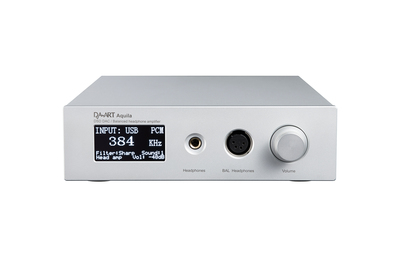
-latest AK4497 DAC chip
-Native DSD64/128/256 + PCM 16-32bit, 32-384 KHz via XMOS-based USB
-DOP64 + DOP128 through S/PDIF, Optical and AES
-PCM 24bit 384KHz through S/PDIF, Optical and AES
-Fully balanced decoder topology + fully balanced high current preamplifier
-Fully balanced headphone amplifier
-OPA1611 with ultralow distortion for LPF + high current OPA1688 for output buffer
-99 steps volume control to the headamp or preamp
-Universal mains power with a switch for 110V or 220V operation
I'd rather save you from a TLDR review so here are my thoughts after playing with it for a week in no particular order:
-Specs are very similar to DA9 minus the discrete headamp as it's now TPA6120 based, but still balanced
-OPA1688 is a high current opamp that I really enjoy in other equipment
-AK4497 is the newest & highest grade DAC chip from AKM: https://www.akm.com/akm/en/aboutus/news/20160107AK4497_001/
Real pics:
And these are the "unique claw-style suspension feet":
USB drivers are not provided in the box and must be downloaded from http://www.yulongaudio.com/col.jsp?id=111
I knew about Project86's review of DA9 but preferred reading it afterwards and I would very much echo his impressions that "filter type"(Sharp, Slow or Super-Slow roll-off) and "sound mode"(1-2-3) make hardly any audible difference at all. I got them set to Sharp & 1 after quite a lot of A/B but I wouldn't bet being able to DBT them:
Project86 didn't appear overly impressed by DA9's discrete headamp and Aquila doesn't have it in order to drop the price of the unit as it's been replaced by a dual TPA6120 with 4.7Ω output impedance. I solely own low-impedance headphones so it appeared quite colored to my ears, but then again I have personally lost faith in built-in headphone outputs of DAC units and it makes more sense to me to use a separate headamp that can be finetuned to your taste, so as you can see on that picture I got it set to "Pure DAC" mode with headamp/preamp disabled.
Another non-TLDR review of Aquila was posted a few months ago: http://www.soundbsessive.com/yulong-daart-aquila/ and here a few quotes:
Tonally wise, the DAC is very similar to the DA9
(..)
Aquila outputs wide soundstage and imaging that’s both clear and not hyper sharp. Instruments and effects are precisely located, almost visible, but without seeming etched inside the room, which would have otherwise sounded unnatural (this is something that happens with some ESS Sabre chips).
(..)
Aquila is a DAC that’s “tonally transparent”: it’s neutral, never calls for attention, but it’s still very detailed and doesn’t over represent any frequency. It has tons of inputs and can read pretty much every format. It’s a very high quality DAC and Pre-amplifier combo, with a very clean signal
So there we have it, it sounds very clear without the usual Sabre shrillness that kinda got me off the D/S DAC train and because it runs a whole lot of excellent chips such as AK4497 + OPA1611 + OPA1688 + XMOS together with Yulong's expertise it really makes for a great DAC in order to feed an amplifier via RCA or XLR.
As I see it, the whole point of Aquila is to essentially provide a DA9 without the discrete headamp for cheaper and I see it selling for less than $800 so if you can combo with a sale it really makes for a worthwhile AK4497-based source + digital preamp to my ears

leeperry
Galvanically isolated his brain
Pros: improves USB audio fidelity substantially
Cons: could be cheaper and shipped with a linear power supply, I'm a believer ^^
Hi guys, I'm surprised this little gizmo isn't more discussed here on head-fi and I happen to be having a lot of fun with it so I figured a brief review in order to build a discussion here would make sense.
I've been messing with USB tweaks for quite a while now and until very recently all we had at hand were 12Mbit/s USB2 galvanic isolators but much like S/PDIF & I²S there is no free lunch to be expected from galvanic isolation and as you can tell from this link isolation does increase distortion, jitter and latency.
I now see 480MBit/s USB isolators being sold but these are aimed at industrial and healthcare use, their manufacturers were even surprised to see audio nerds using them from what I read....long story short, galvanic isolation of the USB data lines has nothing to do in the audio world in my experience and will irremediably color the sound, what sounds "more laid back" and "more organic" today will become "dull" and "flabby" tomorrow.
You would also be surprised by the huge amounts of ripple isolated DC/DC converters have to add(no free lunch again), such as ADuM5000 with its 75 mV yay. I've seen some reaching up to 100/150 mV, so much for audiophile use.
And some USB isolators do provide a connector for an external PSU but it's usually fed to a switching voltage regulator, like the Olimex dongle for instance.
All this said, we have now entered the era of audiophile USB hubs and the latest kid in town is the W4S Recovery: https://wyred4sound.com/products/digital-converters/recovery
A few audio forums raised my interest towards it even further:
http://www.audioshark.org/computer-digital-audio-11/wyred-4-sound-usb-recovery-now-available-9153.html
http://www.computeraudiophile.com/f6-dac-digital-analog-conversion/wyred-4-sounds-recovery-universal-serial-bus-industry-standard-cables-connectors-and-communications-protocols-between-computers-and-electronic-devices-reclocker-findings-audio-performance-curated-thread-27140/index18.html
To top it off, I also happened to have an unused Bakoon BPS-02 at my disposal and because it's currently on sale it essentially all turned out into a done deal

Here we go with the unboxing pics then:
so we got the dongle itself, a 9V wallwart with swappable prongs boards and a short A/B USB cable.
I also had to open it to see its guts eventually:
After quite a bit of squinting I was able to figure out that its voltage regulators go as follow:
http://www.ti.com/product/TPS7A47
http://www.ti.com/product/TPS7A49
The good news is that the board doesn't run any noisy switched-mode regulator hence won't bottleneck external PSU's connected to it

But the main course is eventually its masterclock that happens to be this thing: http://www.crystek.com/home/oscillator/clockdetail.aspx?pn=CCHD-575
An ultra low phase noise HCMOS that sells on its own as a DIY part for $24: http://www.digikey.com/product-detail/en/crystek-corporation/CCHD-575-50-80.000/744-1455-ND/2742154
A while ago I was told that ppm resolution and jitter of a clock are one thing but that at the end of the day in the audio world what matters most is phase noise, W4S have been selling megabucks DAC's for a while so this would certainly confirm this theory.
So I've now shown what's in the box and inside the dongle itself, next step was to have it plugged in then:
LED's are both lit and it's on, reclocking at work y'all

Few points:
-Unlike other audio USB hubs, it doesn't need to see +5V coming from the computer host so the good ole +5V pin severing trick still works like a charm:
Who needs overpriced garage-made shaman-blessed USB cables that would supposedly provide higher shielding efficiency between power and data lines when you can just break the +5V pin and be done with it?
-The best cable is no cable and the second best is the shortest so I ran all my tests with 6 inch USB cables on both ends whenever possible.
Stereophile provided several cable jitter measurements that made this a fact more than an opinion, the shorter the better mostly because all cables act as antennas no matter how shielded they are and Monster also made clear that there's as much turbulence happening on the inside than on the outside.
-You could try your luck with male/male USB adapters but I already broke the USB connector of a DAC with this kind of wild trick and most of those that are selling for a buck are made of the cheapest steel wires they could source, I see them all as very short low quality cables as even those using copper wires aren't quite dual-shielded with foil & braid and are very far from using AWG24/AWG28 wires as typically found in quality USB cables.....there's a very high probability that these will end up acting as bottlenecks at the most crucial stage, ouch.
-Because all voltage regulators in Recovery are linear if you have a pretty bad case of audiophile OCD as I do, instead of wasting your hard-earned cash on industrial grade jitter & ripple-prone USB isolators you could just go bonkers on the PSU feeding Recovery.
I read that the Recovery dongle could use a good week of breaking in so I let it plugged with a DAC fitted in for a few days and finally bit the bullet and gave it all a thorough audition.
Long story short, sonic improvement has really been as dramatic as this review says: http://www.digitalaudioreview.net/2016/03/fighting-fit-usb-audio-from-wyred4sounds-recovery/
This is very well said and sums up our audiophile hobby perfectly, you never know what you've been missing till you get to hear it and after hours of listening to DAC's ranging from $200 to a lot more through Recovery pulling it off the USB signal path turned out to be a major no-go because it made deep bass far more textured and percussive, increased both clarity and resolution quite drastically and even soundstage became more 3D and less colored.
This is as much of a one-way ticket as it gets here folks....but as usual there's always room for further improvements as the official product webpage makes rather clear: https://wyred4sound.com/products/digital-converters/recovery
My PCB says Rev C but anyway I just had to try my Bakoon BPS-02

Zero-ripple pure DC joyness: http://www.6moons.com/audioreviews/bakoon2/1.html
They look great together, don't they:
It very obviously drastically improves the sound quality of Recovery even further, especially in combination with bus-powered audio chips and provides an extra level of improvement that unquestionably makes them a combo here to stay.
All in all, USB is slowly but surely improving with time and Recovery certainly didn't disappoint

Thanks for reading and lemme know if you guys find other tricks to improve it even further, it's just sheer fun to get tinkering to deliver

I've been messing with USB tweaks for quite a while now and until very recently all we had at hand were 12Mbit/s USB2 galvanic isolators but much like S/PDIF & I²S there is no free lunch to be expected from galvanic isolation and as you can tell from this link isolation does increase distortion, jitter and latency.
I now see 480MBit/s USB isolators being sold but these are aimed at industrial and healthcare use, their manufacturers were even surprised to see audio nerds using them from what I read....long story short, galvanic isolation of the USB data lines has nothing to do in the audio world in my experience and will irremediably color the sound, what sounds "more laid back" and "more organic" today will become "dull" and "flabby" tomorrow.
You would also be surprised by the huge amounts of ripple isolated DC/DC converters have to add(no free lunch again), such as ADuM5000 with its 75 mV yay. I've seen some reaching up to 100/150 mV, so much for audiophile use.
And some USB isolators do provide a connector for an external PSU but it's usually fed to a switching voltage regulator, like the Olimex dongle for instance.
All this said, we have now entered the era of audiophile USB hubs and the latest kid in town is the W4S Recovery: https://wyred4sound.com/products/digital-converters/recovery
A few audio forums raised my interest towards it even further:
http://www.audioshark.org/computer-digital-audio-11/wyred-4-sound-usb-recovery-now-available-9153.html
http://www.computeraudiophile.com/f6-dac-digital-analog-conversion/wyred-4-sounds-recovery-universal-serial-bus-industry-standard-cables-connectors-and-communications-protocols-between-computers-and-electronic-devices-reclocker-findings-audio-performance-curated-thread-27140/index18.html
To top it off, I also happened to have an unused Bakoon BPS-02 at my disposal and because it's currently on sale it essentially all turned out into a done deal

Here we go with the unboxing pics then:
so we got the dongle itself, a 9V wallwart with swappable prongs boards and a short A/B USB cable.
I also had to open it to see its guts eventually:
After quite a bit of squinting I was able to figure out that its voltage regulators go as follow:
http://www.ti.com/product/TPS7A47
http://www.ti.com/product/TPS7A49
The good news is that the board doesn't run any noisy switched-mode regulator hence won't bottleneck external PSU's connected to it

But the main course is eventually its masterclock that happens to be this thing: http://www.crystek.com/home/oscillator/clockdetail.aspx?pn=CCHD-575
An ultra low phase noise HCMOS that sells on its own as a DIY part for $24: http://www.digikey.com/product-detail/en/crystek-corporation/CCHD-575-50-80.000/744-1455-ND/2742154
A while ago I was told that ppm resolution and jitter of a clock are one thing but that at the end of the day in the audio world what matters most is phase noise, W4S have been selling megabucks DAC's for a while so this would certainly confirm this theory.
So I've now shown what's in the box and inside the dongle itself, next step was to have it plugged in then:
LED's are both lit and it's on, reclocking at work y'all

Few points:
-Unlike other audio USB hubs, it doesn't need to see +5V coming from the computer host so the good ole +5V pin severing trick still works like a charm:
Who needs overpriced garage-made shaman-blessed USB cables that would supposedly provide higher shielding efficiency between power and data lines when you can just break the +5V pin and be done with it?
-The best cable is no cable and the second best is the shortest so I ran all my tests with 6 inch USB cables on both ends whenever possible.
Stereophile provided several cable jitter measurements that made this a fact more than an opinion, the shorter the better mostly because all cables act as antennas no matter how shielded they are and Monster also made clear that there's as much turbulence happening on the inside than on the outside.
-You could try your luck with male/male USB adapters but I already broke the USB connector of a DAC with this kind of wild trick and most of those that are selling for a buck are made of the cheapest steel wires they could source, I see them all as very short low quality cables as even those using copper wires aren't quite dual-shielded with foil & braid and are very far from using AWG24/AWG28 wires as typically found in quality USB cables.....there's a very high probability that these will end up acting as bottlenecks at the most crucial stage, ouch.
-Because all voltage regulators in Recovery are linear if you have a pretty bad case of audiophile OCD as I do, instead of wasting your hard-earned cash on industrial grade jitter & ripple-prone USB isolators you could just go bonkers on the PSU feeding Recovery.
I read that the Recovery dongle could use a good week of breaking in so I let it plugged with a DAC fitted in for a few days and finally bit the bullet and gave it all a thorough audition.
Long story short, sonic improvement has really been as dramatic as this review says: http://www.digitalaudioreview.net/2016/03/fighting-fit-usb-audio-from-wyred4sounds-recovery/
Removing the Recovery after a long listening session brought dialled down micro-dynamic inflection on Built To Spill’s Untethered Moon and The Notwist’s Neon Golden sounded. In the Recovery’s absence, music came on a little flatter: micro-dynamics tamed, textures smoothed, timbres a little greyed out. Sometimes you don’t know what you’ve got till it’s gone.
This is very well said and sums up our audiophile hobby perfectly, you never know what you've been missing till you get to hear it and after hours of listening to DAC's ranging from $200 to a lot more through Recovery pulling it off the USB signal path turned out to be a major no-go because it made deep bass far more textured and percussive, increased both clarity and resolution quite drastically and even soundstage became more 3D and less colored.
This is as much of a one-way ticket as it gets here folks....but as usual there's always room for further improvements as the official product webpage makes rather clear: https://wyred4sound.com/products/digital-converters/recovery
DC tested safe range: Rev A, 6.5v - 12v; Rev B, 6v - 9v
My PCB says Rev C but anyway I just had to try my Bakoon BPS-02

Zero-ripple pure DC joyness: http://www.6moons.com/audioreviews/bakoon2/1.html
They look great together, don't they:

It very obviously drastically improves the sound quality of Recovery even further, especially in combination with bus-powered audio chips and provides an extra level of improvement that unquestionably makes them a combo here to stay.
All in all, USB is slowly but surely improving with time and Recovery certainly didn't disappoint

Thanks for reading and lemme know if you guys find other tricks to improve it even further, it's just sheer fun to get tinkering to deliver

leeperry
Officials specs say 6V min so I'd go with that.
koblongata
It has two versions, 5V and 6V, you can choose while placing orders, guess you have got the 6V one then... too bad for me!
pataburd
The Recovery easily outperforms the AQ Jitterbug and iFi iPurifier3. I did get excellent synergy matching the Recovery with the USB Disruptor and the iFi iSilencer+, though, especially with the Disruptor--Wow! It is like a two-tier DAC upgrade.
leeperry
Galvanically isolated his brain
Pros: Very natural sounding DAC with a built-in balanced headamp to top it off
Cons: Pricey
Hey guys, so I recently had the opportunity to try the E3 and I thought a review would be in good order as it seems rather clear that Asus are really nailing down the needs of the audiophile niche market with a product that would appear to have gone through quite a lot of thoughts.
First thing first, it shares the same 70's look as the STU but this picture found on google makes obvious that the E3 isn't just a STU with better chips:
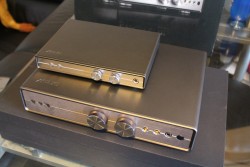
Same design but the comparison stops here

Here goes for what's in the box: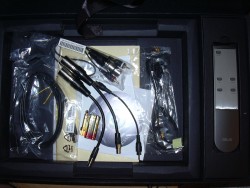
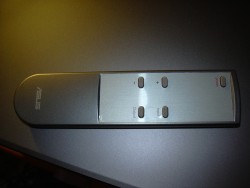
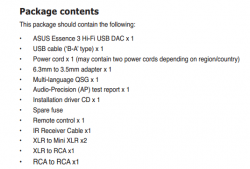
It's good to see that there's a remote control(which is luxury in the audiophile DAC market), XLR to mini-XLR adapters(more on this later) and an IR extension cord so you could extend the IR reception should you not be sitting directly in front of the DAC.
It comes with all the inputs and outputs you would expect from a DAC in this price range: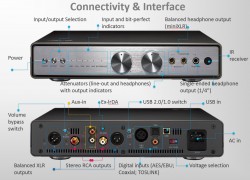
Soundnews.ro provided better internal pics that I could ever make myself, they're visible at http://soundnews.ro/2014/02/09/asus-essence-iii-review-english-version/
It's good to see that it's using two low-jitter TCXO clocks for 44.1/48kHz multiples, a 2oz copper PCB for better thermal management and a rather complicated DC servo circuit that will keep DC offset at bay at every stage.
Asus have not picked the usual PCM179x chips from TI this time but went with AD1955 in a true balanced dual-mono topology with separate analog/digital & power boards from start to end, the overkill approach gets things done

A few quotes on AD1955: http://www.diyaudio.com/forums/digital-source/20902-ti-pcm1792-vs-analogdevices-ad1955.html#post1050539
It also received the highest grades at the bottom of this DAC chips shoot-out and was considered to be "too analytic": http://www.audiodesignguide.com/DAC_final/DacFinal.html
This is not the first AD1955 based DAC I'm hearing and I can certainly confirm that AD1955 sounds analytic and will ensure that every tiny bit of ambience and sound cues get through, Lavry is known for his uncompromising approach and he also went with AD1955 for a good reason.
All this said, a DAC chip is nothing without post-filtering and Asus chose the ceramic packaged AD827 and Muses02...the name of the latter might make it sound like a downgraded Muses01 but they are actually both of the highest grade the Muses line-up has to offer, the difference being that they use different internal designs: http://www.digikey.it/it/en/ph/njr/muses0102.html?WT.z_Tab_Cat=Featured%20Products
It's not like bipolar is better or worse than J-FET, it's just that Asus went 02 because it was a better fit for their DAC post-filtering stages.
Finally, the headamp section is using as much as six LME49600TS chips, two of them on the unbalanced output and four of them for balanced operation.
Each of these chips can output up to 250mA, which is a lot more than your usual opamp: http://www.ti.com/product/lme49600
And last but not least, the E3 volume control goes through a remote-controlled relay-based 0.1% tolerance stepped attenuator. That translates into no channel imbalance and no hard-clicking pot with a zillion resistors attached to it(that might age badly down the road), this is the best scenario if you don't want to lose bit-depth resolution by applying volume attenuation in the digital realm.
Asus is one of the very few manufacturers who gladly provide Audio Precision measurements, the crosstalk/dynamic range and THD+N figures are rather self-explanatory:
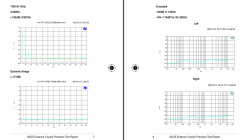
The E3 comes with a switch to disable volume attenuation on the line-out, should you prefer to attenuate volume in your external receiver/amp: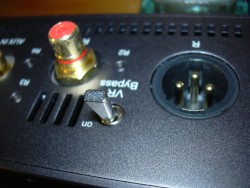
And there is also a USB Audio Class 1.0/2.0 switch: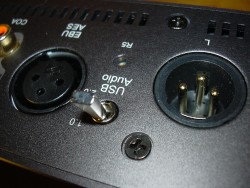
In UAC1 mode, the E3 will support 44.1/48/88.2/96kHz@16/24bit without the need for any driver on any OS and UAC2(which will still work driver-free on Linux/MacOS but will require drivers on Windows) will add 176.4/192kHz and DSD64/DSD128 support.
This is the first DSD-capable DAC I'm using and getting DSD to play in foobar was really as easy as the PDF tutorials Asus provide claimed. I brought the E3 to a friend of mine who's a JRiver user and DSD was also a breeze to setup.
So I've been using the E3 daily for a week now:
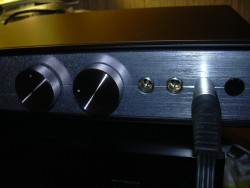
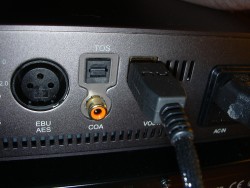
Using my beloved vintage orthos(most of them being both recabled and rehoused), a highly shielded USB cable and a digital library made of SD/HD PCM and DSD material.
I've heard my good share of $1K/$2K/$3K DAC's by now, and the E3 sure didn't disappoint

It always seems to extract a truckload of details through a both very deep and wide 3D SS without ever sounding harsh, agressive, over-percussive or flabby/laid-back, it's all so natural sounding and satisfying to listen to. Audio is merely an illusion and I believe the goal of a DAC is to sound as natural as possible by coloring the sound as little as possible and the one word that comes to mind when hearing the E3 is truly "natural". The E3 is all about making things sound life-like so it's a perfect fit for any kind of acoustic music, surround movies, jazz, classical, funk, reggae and so on.
Bassy music is a real treat as bass is extremely textured and versatile, no "euphonic" colored high-THD discrete buffer this time. Bass response is not overblown, it won't take over the rest of the spectrum and it really sounds "liquid" and well balanced with the rest of the music. This is where their choice of opamps sounds like a winner all the way.
It should also be noted that all opamps are swappable and I initially thought I would solder a few OPA827's and give them a shot but after more in-depth listening, I really don't see the point.......opamp rolling is usually a good idea when the manufacturer went cheap and provided swappable sockets so you could install more advanced chips by yourself but IIRC Asus said that they voiced the E3 against a few other top performing DAC's and it's not hard to hear that they chose AD827 and Muses02 after extensive listening sessions

And let's not forget to mention the icing on the cake, the balanced headamp

Why balanced? Why would it matter? Well, unbalanced cables will act as RF antennas and it's even more true when most headphones cables aren't shielded due to the extra weight.
Balanced operation will drastically increase noise rejection and that will also mean that both transducers of the headphones will run off their own discrete amplication stage, the ground planes of both channels won't be shared anymore.
There is no standard for balanced headphones termination, two 3-pin XLR connectors used to be the industry's choice but these were heavy and are being more and more replaced by a single 4-pin XLR.
Asus chose to go with two 3-pin mini-XLR connectors and provide XLR to mini-XLR adapters, OTOH if your balanced cable is using a single 4-pin XLR you will need to build your own adapter.
You will also need to do some homework if your headphones are currently unbalanced with a shared ground as you will have to unshare their common ground and solder two mini-XLR connectors instead of a single stereo jack connector:
And here goes with my favorite ortho recabled for balanced operation(the camera flash made the DAC front look grainy for some reason):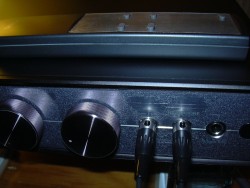
I spent a few hours listening to it with the default unbalanced 1/4" jack connection, then I soldered those two mini-XLR connectors and I can certainly confirm that this has increased sound quality by quite a bit(yet again
 ) and greeted me with a bigger and wider soundstage, a more focused sound and a "thicker" bass response...this was well worth the hassle and I can assure every E3 owner that knitting an adapter of their own or soldering new plugs wouldn't be a waste of their time.
) and greeted me with a bigger and wider soundstage, a more focused sound and a "thicker" bass response...this was well worth the hassle and I can assure every E3 owner that knitting an adapter of their own or soldering new plugs wouldn't be a waste of their time.
All in all, it seems that after Asus started chasing on the internal PC soundcard market and then the sub-$1K DAC territory, they figured they might as well go hunt in the price-no-object highly demanding audiophile DAC niche market and put their expertise to good use by providing the best of what their know-how would allow them to design...Well, the E3 sure sounds like it to my ears /o/
Be warned that once you'll get to hear the E3 through balanced terminated headphones, you might very well need to resign yourself to the fact that its sound is worth the admission price and that there is no escape...the rabbit hole does go deeper and deeper and...

First thing first, it shares the same 70's look as the STU but this picture found on google makes obvious that the E3 isn't just a STU with better chips:

Same design but the comparison stops here

Here goes for what's in the box:



It's good to see that there's a remote control(which is luxury in the audiophile DAC market), XLR to mini-XLR adapters(more on this later) and an IR extension cord so you could extend the IR reception should you not be sitting directly in front of the DAC.
It comes with all the inputs and outputs you would expect from a DAC in this price range:

Soundnews.ro provided better internal pics that I could ever make myself, they're visible at http://soundnews.ro/2014/02/09/asus-essence-iii-review-english-version/
It's good to see that it's using two low-jitter TCXO clocks for 44.1/48kHz multiples, a 2oz copper PCB for better thermal management and a rather complicated DC servo circuit that will keep DC offset at bay at every stage.
Asus have not picked the usual PCM179x chips from TI this time but went with AD1955 in a true balanced dual-mono topology with separate analog/digital & power boards from start to end, the overkill approach gets things done

A few quotes on AD1955: http://www.diyaudio.com/forums/digital-source/20902-ti-pcm1792-vs-analogdevices-ad1955.html#post1050539
What's interesting is highend DAC makers are using the AD1955 like the Lavry Black DA10. Lavry did a lot of analysis of all the chips and picked the AD1955. He has a lot of info on his website forum pages.
It also received the highest grades at the bottom of this DAC chips shoot-out and was considered to be "too analytic": http://www.audiodesignguide.com/DAC_final/DacFinal.html
This is not the first AD1955 based DAC I'm hearing and I can certainly confirm that AD1955 sounds analytic and will ensure that every tiny bit of ambience and sound cues get through, Lavry is known for his uncompromising approach and he also went with AD1955 for a good reason.
All this said, a DAC chip is nothing without post-filtering and Asus chose the ceramic packaged AD827 and Muses02...the name of the latter might make it sound like a downgraded Muses01 but they are actually both of the highest grade the Muses line-up has to offer, the difference being that they use different internal designs: http://www.digikey.it/it/en/ph/njr/muses0102.html?WT.z_Tab_Cat=Featured%20Products
The MUSES01 is a dual J-FET operational amplifier, and the MUSES02 is a bipolar input dual op amp. Both of these high-quality amplifiers are optimized for high-end and professional audio applications using unique materials, advanced circuitry and layout, and skilled craftsmanship. Applications for these op amps include audio preamplifiers, active filters, and line amplifiers that produce excellent sound.
It's not like bipolar is better or worse than J-FET, it's just that Asus went 02 because it was a better fit for their DAC post-filtering stages.
Finally, the headamp section is using as much as six LME49600TS chips, two of them on the unbalanced output and four of them for balanced operation.
Each of these chips can output up to 250mA, which is a lot more than your usual opamp: http://www.ti.com/product/lme49600
And last but not least, the E3 volume control goes through a remote-controlled relay-based 0.1% tolerance stepped attenuator. That translates into no channel imbalance and no hard-clicking pot with a zillion resistors attached to it(that might age badly down the road), this is the best scenario if you don't want to lose bit-depth resolution by applying volume attenuation in the digital realm.
Asus is one of the very few manufacturers who gladly provide Audio Precision measurements, the crosstalk/dynamic range and THD+N figures are rather self-explanatory:

The E3 comes with a switch to disable volume attenuation on the line-out, should you prefer to attenuate volume in your external receiver/amp:

And there is also a USB Audio Class 1.0/2.0 switch:

In UAC1 mode, the E3 will support 44.1/48/88.2/96kHz@16/24bit without the need for any driver on any OS and UAC2(which will still work driver-free on Linux/MacOS but will require drivers on Windows) will add 176.4/192kHz and DSD64/DSD128 support.
This is the first DSD-capable DAC I'm using and getting DSD to play in foobar was really as easy as the PDF tutorials Asus provide claimed. I brought the E3 to a friend of mine who's a JRiver user and DSD was also a breeze to setup.
So I've been using the E3 daily for a week now:


Using my beloved vintage orthos(most of them being both recabled and rehoused), a highly shielded USB cable and a digital library made of SD/HD PCM and DSD material.
I've heard my good share of $1K/$2K/$3K DAC's by now, and the E3 sure didn't disappoint

It always seems to extract a truckload of details through a both very deep and wide 3D SS without ever sounding harsh, agressive, over-percussive or flabby/laid-back, it's all so natural sounding and satisfying to listen to. Audio is merely an illusion and I believe the goal of a DAC is to sound as natural as possible by coloring the sound as little as possible and the one word that comes to mind when hearing the E3 is truly "natural". The E3 is all about making things sound life-like so it's a perfect fit for any kind of acoustic music, surround movies, jazz, classical, funk, reggae and so on.
Bassy music is a real treat as bass is extremely textured and versatile, no "euphonic" colored high-THD discrete buffer this time. Bass response is not overblown, it won't take over the rest of the spectrum and it really sounds "liquid" and well balanced with the rest of the music. This is where their choice of opamps sounds like a winner all the way.
It should also be noted that all opamps are swappable and I initially thought I would solder a few OPA827's and give them a shot but after more in-depth listening, I really don't see the point.......opamp rolling is usually a good idea when the manufacturer went cheap and provided swappable sockets so you could install more advanced chips by yourself but IIRC Asus said that they voiced the E3 against a few other top performing DAC's and it's not hard to hear that they chose AD827 and Muses02 after extensive listening sessions

And let's not forget to mention the icing on the cake, the balanced headamp

Why balanced? Why would it matter? Well, unbalanced cables will act as RF antennas and it's even more true when most headphones cables aren't shielded due to the extra weight.
Balanced operation will drastically increase noise rejection and that will also mean that both transducers of the headphones will run off their own discrete amplication stage, the ground planes of both channels won't be shared anymore.
There is no standard for balanced headphones termination, two 3-pin XLR connectors used to be the industry's choice but these were heavy and are being more and more replaced by a single 4-pin XLR.
Asus chose to go with two 3-pin mini-XLR connectors and provide XLR to mini-XLR adapters, OTOH if your balanced cable is using a single 4-pin XLR you will need to build your own adapter.
You will also need to do some homework if your headphones are currently unbalanced with a shared ground as you will have to unshare their common ground and solder two mini-XLR connectors instead of a single stereo jack connector:

And here goes with my favorite ortho recabled for balanced operation(the camera flash made the DAC front look grainy for some reason):

I spent a few hours listening to it with the default unbalanced 1/4" jack connection, then I soldered those two mini-XLR connectors and I can certainly confirm that this has increased sound quality by quite a bit(yet again

All in all, it seems that after Asus started chasing on the internal PC soundcard market and then the sub-$1K DAC territory, they figured they might as well go hunt in the price-no-object highly demanding audiophile DAC niche market and put their expertise to good use by providing the best of what their know-how would allow them to design...Well, the E3 sure sounds like it to my ears /o/
Be warned that once you'll get to hear the E3 through balanced terminated headphones, you might very well need to resign yourself to the fact that its sound is worth the admission price and that there is no escape...the rabbit hole does go deeper and deeper and...

Mach3
Asus reps took the pricing of the E3 to the stratosphere compared the the E1. Overall well well written up as always. Thank you
leeperry
Galvanically isolated his brain
Pros: affordable PNP solution to audio bliss
Cons: very bright front panel LED's
So a friend of mine finally received it last week and allowed me to play around with it while he's on vacation so I could get to hear whether all the Muses hype was true(someone on another forum claimed that it killed AD797 to his ears).
Just as a short reminder, the Essence ONE runs a dual-mono design from start to end, based on two PCM1795 DAC chips(the same one you can find in many megabucks DAC units) and 11 dual opamps, as described here:

Asus clearly went as "discrete" as you can get with opamps through a fully dual-mono design, and also using separate dual opamps for all +/- polarities allowing for the least crosstalk and the cleanest signal you could posssibly hope for.
All inputs are also reclocked through a 900 MFLOPS 40bit float DSP from ADI: http://www.analog.com/en/processors-dsp/sharc/adsp-21261/products/product.html
The S/PDIF receiver supports up to 24/192(and never glitches up on sample rate changes): http://www.asahi-kasei.co.jp/akm/en/product/ak4113/ak4113.html
The USB controller supports up to 32/192 and abides by the "USB Class 2" specs so it will only require drivers on Windows(that also come with native bit-perfect ASIO 2.2 capabilities) and will work as PNP on MacOS and Linux: http://www.cmedia.com.tw/ProductsDetail.aspx?PSerno=43
I should also state that this USB controller is self-powered from the internal toroidal transformer and still works perfectly fine after you break the 5V pin of the USB cable so don't expect miracles from USB PSU's for that matter, as none will ever occur(breaking the pin would also supposedly improve SQ from what SOTM are claiming).
The headamp also runs in dual-mono with two of those chips and each of them can output up to 250mA(the average opamp is capped at 50mA max, often a lot less): http://www.ti.com/product/lme49600
All this to say that Asus have been making highly overclockable computer parts for quite some time so you can always count on their R&D to provide their expertise in PCB design, as stereo audio is probably child's play compared to a TOTL Ghz-range computer board meant to be cooled down by liquid nitrogen

Much has been written about the regular ONE and I'm sure you can easily find dozens of reviews of it via google as the ONE really took the standalone DAC market by storm.
Differences between the regular ONE and the Muses edtion go as follow:
1) opamps in positions 1 and 2 have been replaced by the market leading Muses01 opamp from NJR: http://semicon.njr.co.jp/eng/MUSES/MUSES01.html
2) the PCB has been revised in order to provide a jumper to set the headamp gain in either LOW or HIGH position, as the regular ONE came with its headamp set to HIGH and this was a bit of a potential issue with low impedance/high sensitivity headphones for people who don't listen at loud volume.
3) the regular and Muses edition are using different pots(B10K>A10K) on the headamp: http://www.taiwanalpha.com.tw/english/p_e_70-1.htm
All I can say compared to my "Stello Eximus DP1" is that deep bass is back with a vengeance! But I'll give you that the DP1 is pretty bass-shy to begin with(hence the "filter" megabass button on its front panel right under the phone output, reason why many people like to pair it with a beefy tube headamp). Also the SS shape is rather different, the DP1's strong asset is its "live sounding" SS when this Muses01 ONE really excels at mids, and the SS is really completely differently shaped.....I guess opamps rollers are well aware of how opamps can modify the SS perception and when the DP1 colors the SS by breaking it into many 3D layers, the Muses ONE makes it sound more like a "sphere" so to speak...it feels more "natural" but also less expansive. But the DP1 costs three times more than the Muses ONE so put my opinion back into context as the SS is still very wide and clear, presenting a sort of "holographic" instruments separation that surely will take you by surprise. Stereo jitter performance(at which the DP1 is considered a benchmark) appears most excellent as well.
Textured vocals(recorded with Neumann U87's for instance) really sound as true to life as it gets, I'm impressed to say the least.
Of course, my friend's got the headamp gain switch:
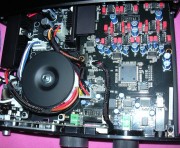
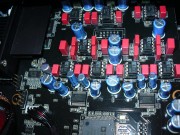
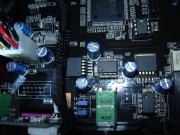
With the gain set to high, my favorite 150Ω yamie ortho still sits at 9 O'clock just like with the regular ONE. OTOH, with the gain set to low, it's more like noon, quite a bunch of much required headroom indeed! Stereo tracking appears perfect to my ears(I guess that might also be part of the reason why they went A10K instead of B10K on the headamp).
Anyway, it seems rather clear that when the regular ONE felt a bit like unfinished business due to its entry level swappable opamps and high headamp gain, the Muses edition addresses both issues brilliantly and the 6moons review conclusion couldn't be more spot-on IMO as I can only agree that if you seek serious bang/bucks, the Muses ONE should seriously be considered.
You can surely get better sounding gear, but it'll cost ya. I would presume that entering the serious DAC market segment was quite a bet for Asus but the ONE has finally reached maturity to my ears...getting this kind of performance out of the box under a grand is darn impressive

A few hours have passed and after more critical listening, the center of the SS really feels as if the singers were standing in the room...and the texture of the mids is really worth all the Muses hype to my ears. Hi-res sounding and yet not too sterile/clinical sounding, yay!
OTOH, when the DP1 tends to make everything enjoyable the Muses ONE is rather unforgiving on subpar recordings....it will not hide defects in order to provide permanent euphonic enjoyment so you'll really have to polish your source files. To my ears, the Muses ONE sits nicely between the colored hifi DAC that makes everything dreamy sounding and the harsh monitoring DAC designed to make you hear the defects more than anything else....so you get a highly enjoyable reference DAC that neither hides the truth or tries to make defects more audible than they really should be(which become an asset when you realize that the average record has gone through hundreds of 5532/5534 opamps).
I believe this reloaded ONE puts back into perspective the ridiculous amounts of money ppl can/have to spend on boutique DAC's, headamps, shaman blessed USB cables, jitter-prone S/PDIF transports, battery based PSU's that all together can easily reach the $5K bar when the Muses ONE provides such high bang/bucks for quite a bit under a grand. I finally got to hear what my friend's enthusiasm was all about, and movies/70's female vocals are truly something on the latest offering from Asus indeed. IMHO you have to be seriously demanding/OCD'ed to turn down on what the Muses ONE has to offer, gg Asus

Also, the ONE isn't amnesic.......you can plug it off, plug it back in days later and it will remember what the last active input was and whether upsampling was engaged. This might seem like a detail but that's the kind of feature that quickly gets on your nerves when it's not the case(talking from personal experience here

The only thing I don't really like is the front panel bright LED's as I usually watch movies in a pitch black room but that's nothing some black masking tape can't fix.
PS: if you're from team "unmodified = not worth listening to" then you can still roll the opamps in this pimped edition of the ONE, but quite frankly I would leave the Muses opamps alone. Opamps might look like $0.1 lego bricks but they really aren't and these integrated components were a literal technological breakthrough when they were invented. All this to say that playing God by rolling any opamp "that fits" can end up in audible glitches/wooshing(due to stabilty issues and oscillation) or worse..
You really have to stick to "unity gain stable" opamps and they also have to come in DIP8 packages and have to be two channels "dual opamps" and not one channel "single opamps". You can still find single opamps soldered onto dual adapters, but if one of them is faulty or soldered in the wrong direction you will brick your ONE(and good luck with RMA)...so I would personally advise to only buy from well established sellers that claim every module to have been tested before shipping and I would triple-check that every opamp is properly soldered and every module has been inserted in the right direction into the ONE.
Asus are kind enough to provide an opamp rolling guide: https://www.google.com/search?q=Xonar_Essence_One_Opamp_Swap_Guide.zip
Personally, I would simply swap the LME49720NA's with the dual OPA2132P opamp or single OPA627's on dual adapters, but the latter is the most counterfeit opamp so I would buy OPA627AU's from an authorized dealer, have them soldered on dual adapters or buy them PNP from someone highly trustable. OPA2132P is a safe and cheap trouble-free bet and is famous for its warm and yet detailed sound, so much that I can only agree with this statement: http://tangentsoft.net/audio/opamps.html
Quote:
A very good chip to start with. Indeed, you may be so happy with it that you stop looking at other chips!
I've personally soldered, rolled and heard dozens of opamps and when AD797 or LT1028 aren't "unity gain stable" and often tend to get cranky(leading to audible artifacts) hence requiring a tailor-made surrounding circuit, OPA2132P is very sociable and always a reliable ally IME. There's a very good reason why many expensive DAC's embed it and Asus recommended it in their opamp rolling guide

In one sentence, I would simply say that the Muses ONE allows you to get one foot in the high-end audiophile door without writing a 4 figures check.
This is my first formal head-fi review using this form and I hope to have shed some lights on this great little unit and managed to share the enjoyment

masterbrood
I just opened my "Muses edition" up to swap the jumpers, but to my surprise, no jumpers were to be found 
I compared the insides to your pictures, everything seemed to be exactly the same except for the jumpers
Anyhow, really excited about the equalization tutorial you linked, will plow through it tonight ^^
Do you think I would gain anything to recable the Denons to balanced XLR and use that output instead, or is the difference (compared to RCA) in this case perhaps not that great? :O

I compared the insides to your pictures, everything seemed to be exactly the same except for the jumpers
Anyhow, really excited about the equalization tutorial you linked, will plow through it tonight ^^
Do you think I would gain anything to recable the Denons to balanced XLR and use that output instead, or is the difference (compared to RCA) in this case perhaps not that great? :O
Theodore
Hi.
Did someone try Asus with the Hifiman magnetic headphones?
Theodore.
Did someone try Asus with the Hifiman magnetic headphones?
Theodore.
jabbilabbi
hello i'm a little confused about the opa627ap op-amp configuration you guys are talking about.
dual to mono 8 dip for the headphone buffer is for the headphone buffer or the LPF? http://i.imgur.com/PiyWOlG.png (marker 4 not marker 2)
and is this the correct type of module http://www.ebay.com/itm/1set-module-OPA627AP-OPA627-Dual-to-Mono-Hi-Fi-Audio-Op-Amp-replace-NE5532-/350789278101?pt=LH_DefaultDomain_0&hash=item51acab9995
What op-amps are you guys using for LPF (marker 2 on op amp map)
dual to mono 8 dip for the headphone buffer is for the headphone buffer or the LPF? http://i.imgur.com/PiyWOlG.png (marker 4 not marker 2)
and is this the correct type of module http://www.ebay.com/itm/1set-module-OPA627AP-OPA627-Dual-to-Mono-Hi-Fi-Audio-Op-Amp-replace-NE5532-/350789278101?pt=LH_DefaultDomain_0&hash=item51acab9995
What op-amps are you guys using for LPF (marker 2 on op amp map)


















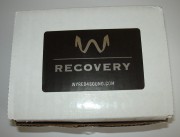
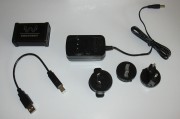

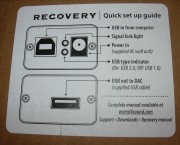
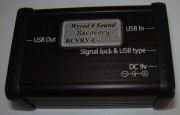
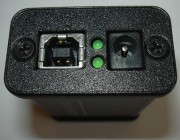
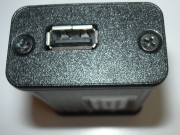
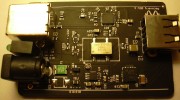
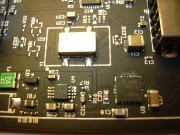
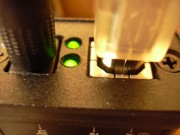
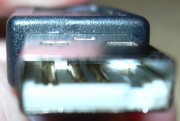



As long as the heavy hitters aren't your white whale, it looks like it can drive anything else well. It would be nice if they just went all out and made a competitor to the A70Pro or even the A30Pro or SMSL H300 which I have also.
I still like their support the best. There's some things I've got that would have to be shipped to China if anything goes wrong. I had the Atom+ stack and it was flawless and didn't take up half the desk like the SMSL H400 I've got.